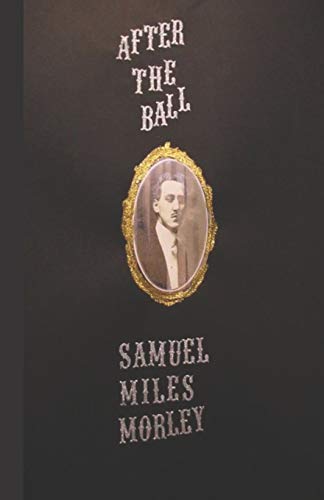
Publisher:
N/A
Publication Date:
N/A
Copyright Date:
N/A
ISBN:
9798601507783
Binding:
Paperback
U.S. SRP:
N/A
AFTER THE BALL
By Samuel Miles Morley


- Posted by IR Staff
- |
When Jon Schertz receives a nighttime call from one of his psychiatric patients, he thinks little of taking a short drive through the neighborhood and meeting the man in an abandoned house. To Jon’s surprise, his patient walks through a door and disappears. Jon tags along with the police as the investigation proceeds, unearthing more secrets about the old house and the people who have passed through it before. The law advances steadily as Jon’s own research discovers the connections between the house, forgotten stage magicians, and their off-stage dalliances with the occult, but the history soon begins to manifest itself in unsettling appearances, vivid nightmares, and the reopening of a murder case long since shut.
AFTER THE BALL deftly handles all of these concerns. The historical setting – the Twin Cities in 1974 – shines through from page one, filling and shaping the narrative space with concise detail. The period-piece feel supports its major structural components: a noir vibe (the protagonist who fears for his safety and sanity as he investigates, the workaday policemen uncovering a buried conspiracy) and an evident interest in the history of magic and the occult. It thus establishes and characterizes a natural order (Jon is a model small-town 20th-century American) before successfully subverting it, raising the tension with mystery at first and danger as the plot progresses. Once the plot begins to move, it stays tense by keeping the reader guessing about its magical-occult themes: nearly until the final encounter, the text refuses to settle whether events are truly supernatural or a high-level illusion.
The prose itself is confident, detailed, and readable, and clips along once the primary plot begins. It also has some quirks of overwriting which can interrupt the tension or distract from a scene. The text often name-drops historical objects, but doesn’t always accomplish much when it specifies a make of car or style of lamp. Characters are introduced with a height given to the inch, but they’re rarely described in relational terms. Still, these are small stylistic concerns, and don’t detract significantly from a reader’s enjoyment of the total product.
More vexing is the focus on plot over character. The plot itself is compelling, thoughtfully constructed and presented; the characters are not. Jon is described early on, but the particularities of his character (a psychologist, a college athlete, a father and husband) rarely have any bearing on how the plot unfolds; the text could substitute him for anyone else and still unfold as it does. There are scenes that try to flesh him out – especially scenes with his wife and son, showing his increasing stress and fear – but they tend not to contribute meaningfully to the plot, ending up wasted space in an otherwise well-constructed narrative. Still, the plot itself is sound and the delivery is solid. Its interest in the sometimes-sordid history of stage magic and the mysteries of the occult permeates the text, and more than makes up for the deficiencies of character.
~Dan Accardi for IndieReader

Publisher:
N/A
Publication Date:
N/A
Copyright Date:
N/A
ISBN:
9798601507783
Binding:
Paperback
U.S. SRP:
N/A

- Posted by IR Staff
- |
Samuel Miles Morley’s new novel AFTER THE BALL mixes horror, mystery, and suspense. Set in the 1970’s, a patient of psychiatrist Jon Schertz disappears before his eyes; a few days later the patient fatally shoots himself in the place where he disappeared. Jon is obsessed with finding out how he vanished and why he killed himself. The twisting maze leads him back to a magician in the 1940’s, who used both illusion and the occult. The book, named for a famous illusion, is filled with contrasts while the plot twists feel like layers of an onion, but what is left at the core?

AFTER THE BALL
Samuel Miles Morley
9798601507783
Rated 4 / 5 based on 1 review.